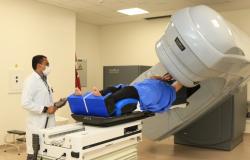The IBGE announced on the 19th that, in Brazil, last year, with the improvement of the job market and the increase in the number of beneficiaries of social programs, the mass of monthly household income per capita reached R$ 398.3 billion , the highest value in the historical series of the Continuous National Household Sample Survey (PNAD), started in 2012. The increase was 12.2% compared to 2022. In relation to 2019, the expansion was 9.1%.
In Acre, the mass of monthly household income per capita also reached the highest value in the historical series of the Income from all sources module, of the Continuous PNAD: R$ 981 million. The increase was 5.8% compared to 2022. In relation to 2019, the expansion was 32.7%. The trajectory of Acre’s monthly income since 2012 is shown in the following graph:
In Acre, the real average monthly household income per capita also reached the highest value in the historical series of the research: R$ 1,074, an increase of 4.5% compared to 2022. In relation to 2019 (R$ 854) the increase was 25. 8% year which, previously, had registered the maximum value in the historical series.
For Brazil, the real average monthly household income per capita also reached the highest value in the historical series of the research: R$ 1,848, an increase of 11.5% compared to 2022. In relation to 2019 (R$ 1,744, the increase was 6 .0%.
In the North Region, the average real income per capita was R$1,302, 18.8% above the 2022 value (R$1,096), as detailed in the following graph.
Average income from all sources is the highest since 2012 (R$ 2,087)
In Acre, income from all sources, considering the resident population with income, increased 6.5% compared to 2022, reaching R$2,087, reaching the maximum value in the historical series. The average income from other sources, other than work, grew 4.5%, reaching R$1,074, also a record in the historical series.
The income from all sources in Brazil was R$2,846 and was 36.4% above the income of Acreans. For Brazil, the indicator increased by 7.5% compared to 2022. The average income from other sources, other than work, grew by 6.1%, reaching R$1,837, also a record in the historical series.
The proportion of the population with income received from work in Acre falls
In the state, the proportion of the population with income normally received from work was reduced. It went from 35.5% (or 317 thousand people) in 2022 to 33.8% (or 309 thousand) in 2023. The lowest percentage of this indicator occurred in 2020 (31% or 272 thousand), still under the influence of the pandemic. In Brazil, this indicator broke the series record, going from 44.5% (or 95.2 million people) in 2022 to 46.0% (or 99.2 million) in 2023.
In Acre, the proportion of households with a Bolsa-Família beneficiary is 34.8%
The proportion of households in Acre with a beneficiary of the Bolsa-Família program jumped from 30.2% in 2022 to 34.8% in 2023, whereas in 2019 it was 26.9%. Between 2019 and 2023, while the per capita income of the group of households that received Bolsa Família grew 32.5% (from R$369 to R$489), among those that did not receive the benefit the variation was negative (-0. 9%) (from R$1,528 to R$1,514).
In Brazil, the proportion of households in the country with a beneficiary of the Bolsa-Família program jumped from 16.9% in 2022 to 19.0% in 2023. Between 2019 and 2023, while the per capita income of the group of households that received Bolsa Family grew 42.4% (from R$446 to R$635), among those who did not receive the benefit the variation was only 8.6% (from R$2,051 to R$2,227).
In the state, the 1% of people with the highest income earn 32.4 times more than the 40% with the lowest income
The 1% of the state’s population with the highest household income had an average income equivalent to 32.4 times the income of the 40% of the population with the lowest income. In 2023, despite the increase in average household income per capita in all strata, inequality is very high in the state.
However, the numbers for Brazil demonstrate even greater inequality. The 1% of the country’s population with the highest household income had an average income equivalent to 39.2 times the income of the 40% of the population with the lowest income.
The Gini index of real monthly household income per capita in Acre fell to 0.511, the lowest in the historical series. In 2022 its value was 0.523. The highest Gini in the series (0.566) occurred in 2012. This indicator measures income concentration and varies from 0 (maximum equality) to 1 (maximum inequality). Acre’s Gini index was below Brazil’s (0.518). For Brazil, the highest Gini in the series (0.545) occurred in 2018.
Acre is the state of the federation with the lowest percentage of people with income (51.5%)
The share of people with income in the Brazilian population increased from 62.6% in 2022 to 64.9% in 2023, and reached a new record in the historical series, started in 2012. However, when analyzed by federation units, it also presents the traditional profile of indicators: higher levels of population with income in States of the South and Southeast and lower levels in the North and Northeast. Rio Grande do Sul is the State with the largest share, 70.3%, followed by Santa Catarina (69.4%), São Paulo (68.6%) and Minas Gerais (67.7%). At the other end are Acre (51.5%), Amazonas (53%), Roraima (54.8%) and Maranhão (56%).
For IBGE, the improvement in the job market, with an increase in employment and the expansion of Bolsa Família are the factors that may explain the expansion in income last year.
Orlando Sabino writes on Thursdays at ac24horas
Tags: Acre capita household income reaches record ac24horas .com
--




